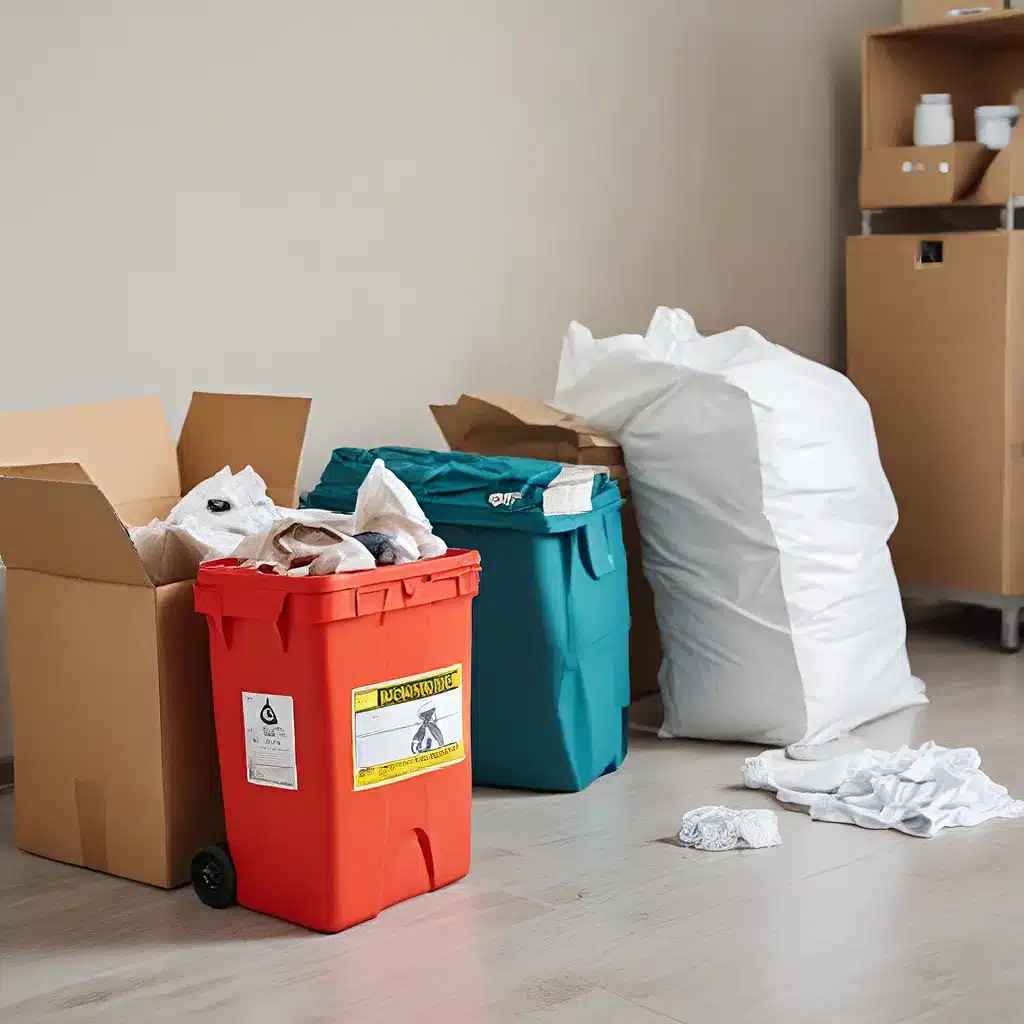As someone who’s always been a bit of a clean freak, I’ll be the first to admit that dealing with medical waste at home can be a real pain in the you-know-what. I mean, think about it – these are the kinds of things that can poke you, infect you, and generally make a mess of everything. But fear not, my fellow clean-obsessed friends, because I’m here to share some foolproof tips on how to handle medical waste safely and responsibly.
The Dangers of Improper Disposal
Let’s start with the basics – why is it so important to properly dispose of medical waste, anyway? Well, according to the EPA, improper management of discarded needles and other sharps can pose a serious health risk to the public and waste workers. Imagine a janitor or housekeeper accidentally getting stuck by a used needle – that’s a recipe for disaster, my friends.
And it’s not just the potential for injury that we need to worry about. These used needles and other sharp objects can also transmit serious diseases, like HIV and hepatitis, if they’re not handled with the utmost care. Yikes, right? So, yeah, we definitely don’t want to be tossing this stuff in the regular old trash.
The Two-Step Disposal Process
Okay, now that we know why proper disposal is so important, let’s talk about how to actually do it. According to the FDA, the key is to follow a two-step process to minimize the risk of needle sticks, cuts, and punctures.
Step 1: Collect your used needles, syringes, and other sharps in a sturdy, leak-proof container. This could be a special sharps disposal container you can buy, or even a hard plastic container with a screw-on lid. Just make sure it’s not a clear container, as that could freak people out.
Step 2: Once the container is about three-quarters full, it’s time to get rid of it. Check with your local trash removal services or health department to see what options are available in your area. You might be able to drop it off at a doctor’s office, hospital, pharmacy, or even a special hazardous waste collection site.
Now, I know what you’re thinking – “But Adam, what if I’m traveling and I don’t have access to all those fancy disposal options?” Well, the FDA has got your back on that one too. They recommend always carrying a small, travel-size sharps disposal container just in case. That way, you can safely stash your used needles and sharps until you can properly dispose of them.
Alternatives to Incineration
Okay, so we’ve got the disposal process down, but what about the actual treatment of medical waste? You know, making sure it’s not, like, a biohazard or anything? Well, the EPA has some interesting insights on that.
Apparently, more than 90 percent of potentially infectious medical waste was incinerated before 1997, but those practices have become a bit more stringent since then. Nowadays, there are a few alternative treatments that can be used to render medical waste non-infectious before it’s disposed of as solid waste. These include:
- Autoclaving (using high-pressure steam to sterilize the waste)
- Microwave irradiation (using microwave energy to disinfect the waste)
- Chemical disinfection (using chemicals like chlorine to kill pathogens)
Now, I know what you’re thinking – “But Adam, isn’t that just a fancy way of saying ‘burning it’?” Well, yes and no. While incineration is still an option, the EPA has put some strict emission standards in place to protect the air quality and our health. So, the good news is that these alternative treatments are becoming more and more common as a safer way to handle medical waste.
The Importance of State Regulations
Now, here’s the thing – when it comes to medical waste disposal, there’s no one-size-fits-all solution. That’s because each state has its own unique set of regulations and guidelines. As the EPA puts it, “State programs can vary” when it comes to this stuff.
So, if you’re wondering what the specific rules are in your neck of the woods, it’s always a good idea to check with your local trash removal services or health department. They’ll be able to clue you in on the latest dos and don’ts, as well as any special programs or services they might offer for medical waste disposal.
And let’s not forget about those other federal agencies that have a say in this too, like the CDC, OSHA, and the FDA. They all have their own regulations and guidelines when it comes to managing medical waste, so it’s important to stay up-to-date on what they’re saying as well.
Wrapping It Up
Well, there you have it, folks – your crash course in safely disposing of medical waste at home. From the dangers of improper disposal to the two-step process, alternative treatment methods, and the importance of state regulations, I hope I’ve given you a pretty comprehensive overview of this, uh, not-so-glamorous topic.
Remember, when it comes to handling medical waste, it’s all about being proactive, cautious, and responsible. After all, the last thing any of us want is to end up accidentally spreading some nasty disease or causing a big old mess. So, let’s all do our part to keep our homes – and our communities – as clean and safe as possible, shall we?
Now, if you’ll excuse me, I’ve got some sharps to dispose of. Catch you on the flip side!







